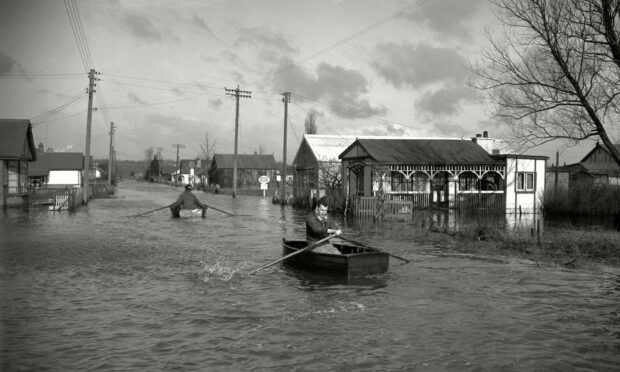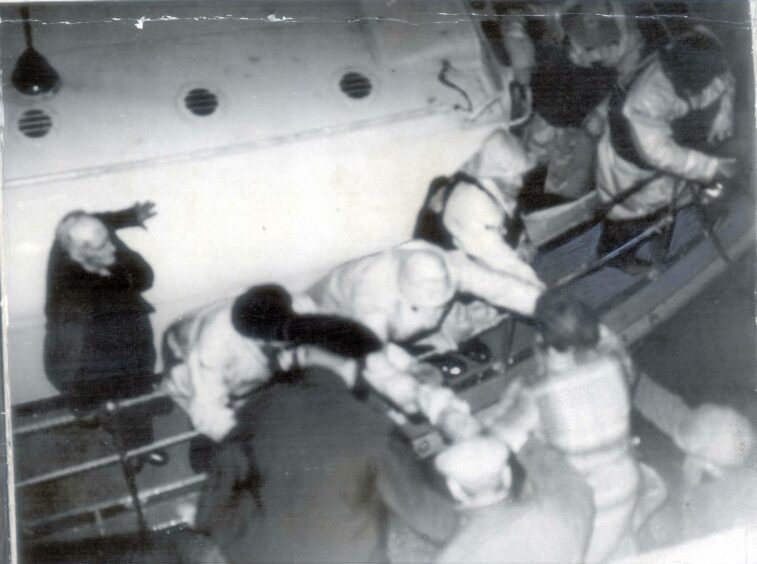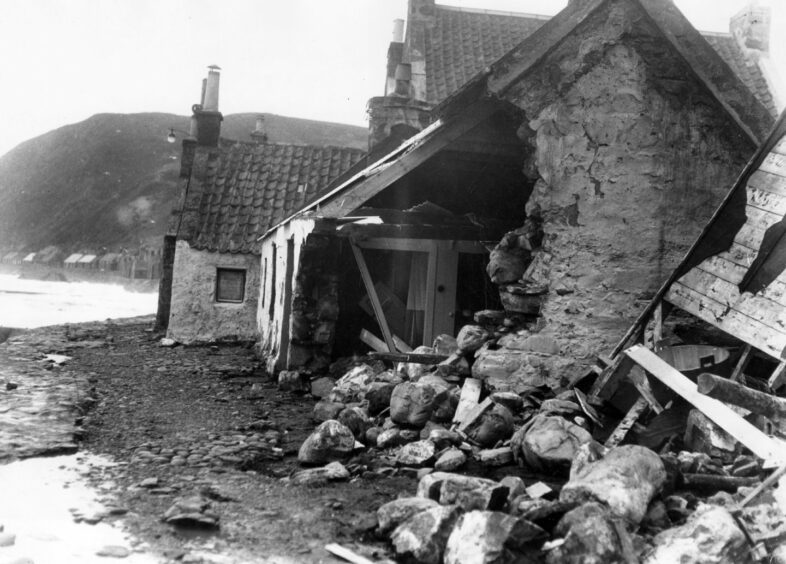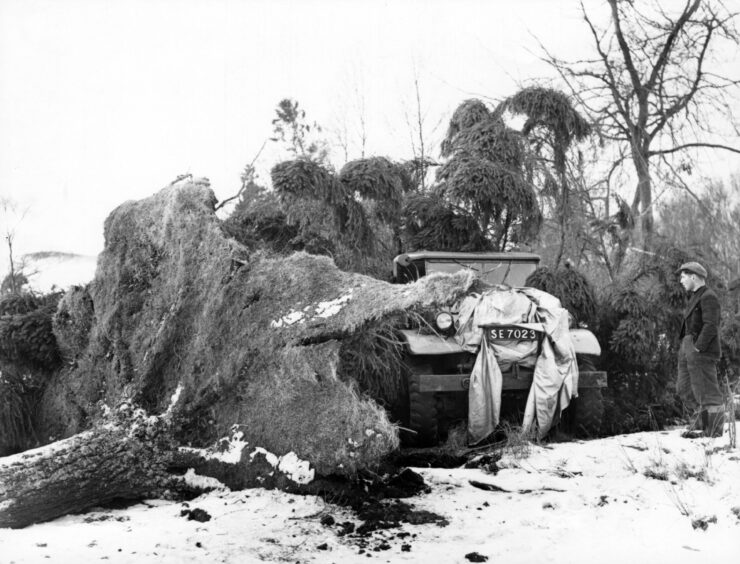The scenes of devastation and destruction caused by Storm Arwen have offered a stark reminder of the terrifying power of nature.
A week after the north east was battered by fierce winds and blizzards, which led to more than 200,000 people suffering power outages and loss of water and other essential supplies, many residents are still struggling to get back to normal after their properties were wrecked by the tempest.
Recent events prompted one Press & Journal reader, Ian MacPherson to tell us about his memories of the Great Gale of 1953, which had catastrophic consequences and claimed hundreds of lives throughout Britain, Ireland, Belgium and, most notably, in the Netherlands.
The biggest death toll in the UK occurred when the MV Princess Victoria, sailing from Stranraer to Larne, was struck by a massive wave which caused the already damaged ferry doors to open and engulf the crew and passengers, with 133 people, many of them women and children, being killed.
Mr MacPherson was among the many folk who had no idea of what was coming when he went to his bed on January 31 1953.
In these days, there was little communication or weather forecasts, especially for those dwelling in remote parts of the country.
He recalled: “The ferocity of Storm Arwen and the damage and havoc it has caused took my mind back to the events of January 31 and February 1.
“I remember waking up in the head keepers house on Invercauld Estate, hearing the wind howling and snow battering the bedroom window.
“I thought: ‘Great, no school today’ and snuggled deep under the blankets.
“But there was no school for a few days.”
Mr MacPherson and his parents soon discovered the scale of the damage.
He recalled: “A colossal number of trees had been toppled. They blocked roads and tracks and they mangled electricity lines.
“Electricity had only recently reached where we lived, so we still had ‘Tilly lamps’ and paraffin heaters in good working order and a Calor gas ring, as well as our allocation of sticks and coal.
“The great trees in the vicinity of the Invercauld gates beside the A93 were all blown over and a conifer woodland in Glen Clunie, south of Braemar, had been completely flattened.
“One keeper’s cottage remained standing amidst what looked like an ocean of fallen timber: a sight which provided a vision of a nuclear blast.”
The force of the sea also ripped through myriad telephone and electricity cables, rendering communication impossible.
Similar stories were reported in Belgium and The Netherlands, where the coastal residents on both sides of the North Sea were entirely at the mercy of the tide.
The dykes in the Netherlands were ripped asunder and more than 1,500 people died even as a desperate rescue mission was launched.
It may provide little consolation to those affected by Storm Arwen, but in human terms at least, the cost has been far less than that of 68 years ago.
Mr Macpherson, who lives in Buckie, said: “The immediate death toll of the recent storm was tiny [in comparison to the Great Gale].
“Technology, planning legislation and environmental awareness have all advanced since 1953. This storm had strong meteorological similarities, but these were not identical to The Great Gale.
“In coastal areas, there was not the high spring tide factor. However, from my personal experience of the day, viewing TV pictures and reading and listening to reports about the storm, I am inclined to put what happened on November 26 into the same category of ferocity as the 1953 event.”
There has been criticism in many quarters of the slowness of councils and central government to respond to the massive impact of Storm Arwen.
And Mr MacPherson believes Scotland – and other countries – should work now to prepare for more extraordinary weather events in the future.
He said: “Almost 70 years have passed since the Great Gale. There have been other big storms in recent decades, but that of November 26 seemed particularly vicious.
“As changes take place in the atmosphere, as oceans warm, ice sheets melt and sea levels rise, these events are likely to become more frequent.
“There will be consequences for coastal and inland areas and urban, rural and dispersed communities.
“The onus is on government, local authorities, public utilities and services, business, landowners and individuals to plan, prepare and be able to respond quickly and effectively.”
He spoke as somebody who has seen many storms in different centuries.



